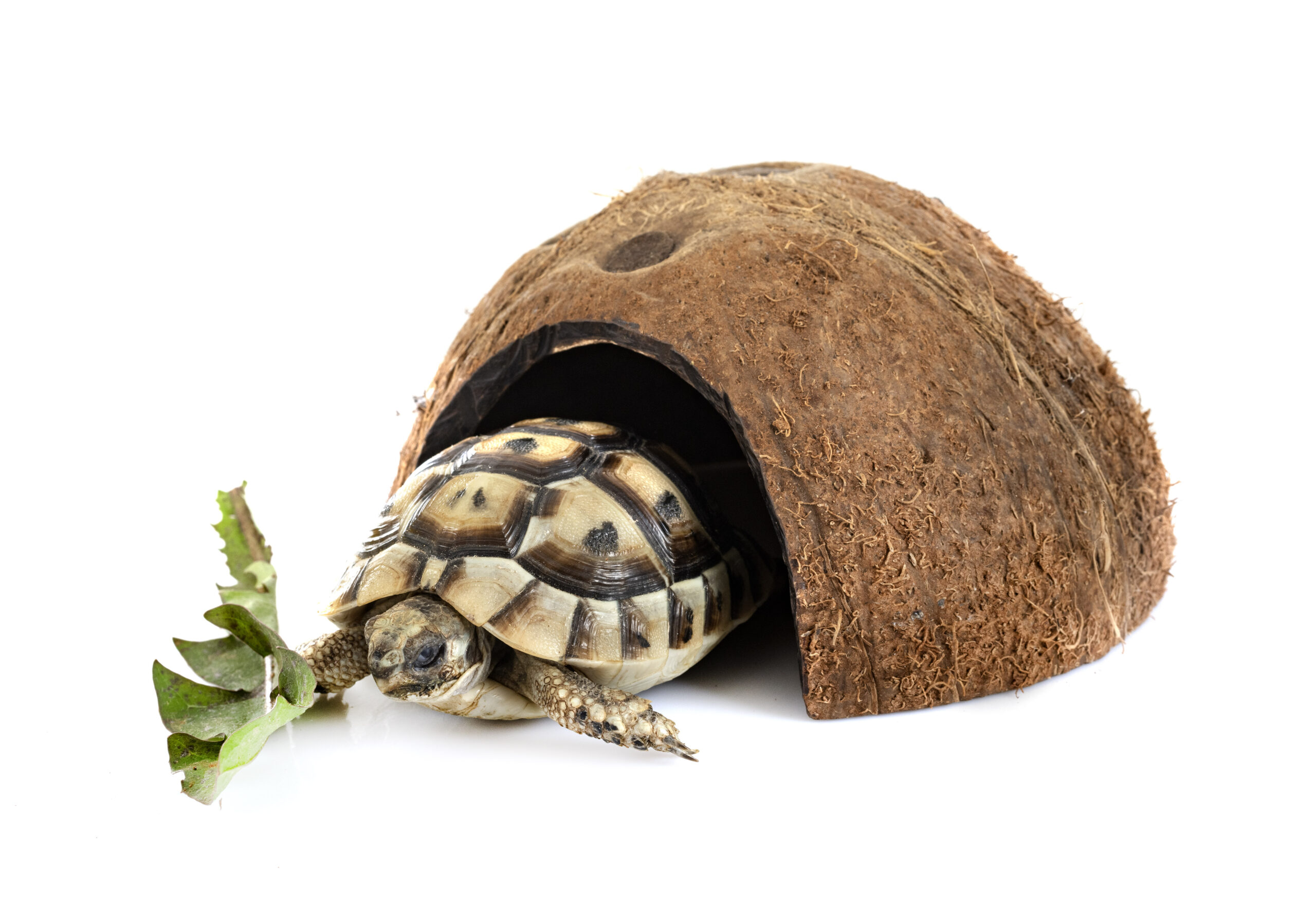Turtle tank smell is a common issue faced by many turtle owners. In this ultimate guide, we will provide you with proven strategies to keep your pet’s habitat fresh and eliminate the unpleasant odor. We will cover various methods, including the use of tank deodorizers, proper cleaning techniques, and maintaining good turtle tank hygiene.
- Reduce turtle tank odor by following these proven strategies.
- Use tank deodorizers to freshen up your turtle’s habitat.
- Proper cleaning techniques and good tank hygiene are essential.
- Prevent turtle tank smell by controlling food particles and algae growth.
- Invest in the right equipment for efficient waste removal.
Common Causes of Turtle Tank Smell
Turtle tank odor is a common issue that many turtle owners face. Understanding the causes of this unpleasant smell is essential in effectively eliminating it and maintaining a fresh and clean environment for your pet. Here are some common factors that contribute to turtle tank odor:
Poor Filtration
One of the main culprits behind turtle tank odor is poor filtration. Turtles produce waste, which, if not properly filtered, can accumulate and cause a foul smell. Investing in a powerful water filter designed specifically for turtle tanks is essential for efficient waste removal and odor control. Regular cleaning and maintenance of the filter is also crucial to ensure optimal performance.
Food Particles
Food particles that are not promptly removed from the tank can decompose and emit an unpleasant odor. To prevent this, feed your turtle in a separate container filled with water, keeping the tank free from leftover food. By reducing the presence of food particles, you can significantly minimize turtle tank odor.
Algae Growth
Algae growth in the turtle tank not only affects the visual appearance but also contributes to a foul smell. Algae can produce a distinct odor that permeates the tank. Regularly cleaning the tank and using algae cleaners or magnetic sponges to remove algae from the tank walls can help control the growth and reduce the odor.
Turtle Waste
Turtle waste, including feces and urine, can quickly lead to a smelly tank if not adequately cleaned. The buildup of bacteria and organic material from turtle waste contributes to the foul odor. Regularly performing tank cleanings and removing any waste promptly is crucial in maintaining a fresh and odor-free environment for your turtle.
Eliminating turtle tank odor requires a combination of proper filtration, regular cleaning, and good tank maintenance practices. By addressing these common causes of odor, you can create a pleasant and healthy habitat for your pet turtle.
Freshening up Turtle Tanks: Proper Feeding and Food Particle Control
Turtle tanks can develop an unpleasant odor due to the presence of food particles. However, by practicing proper feeding techniques and implementing effective food particle control, you can keep your turtle tank smelling fresh and clean. Here are some essential tips to help you maintain odor-free water for your turtle:
Feeding in a Separate Container
One effective method to reduce food particles in your turtle tank is to feed your turtle in a separate container filled with water. This prevents the food from mixing with the tank water and decreases the chances of it decomposing and causing foul odors. After feeding, promptly remove any uneaten food from the container to prevent it from decaying and contributing to a smelly tank.
Avoid Overfeeding
Overfeeding your turtle can lead to excess food particles in the tank, which can contribute to a foul smell. To avoid this, provide your turtle with the appropriate amount of food according to their age and size. It’s important to remember that turtles have slower metabolisms compared to other pets, so they don’t require frequent or large meals. By feeding your turtle the right portion size, you can minimize leftover food and the potential for a smelly tank.
Odor-Reducing Solutions
Using odor-reducing solutions, such as sludge remover conditioners, can help control food particle buildup and odor in your turtle tank. These products break down excess organic material and waste, reducing the chances of foul odors. Follow the instructions on the product label for proper dosage and application. Regular use of odor-reducing solutions can significantly freshen up your turtle tank and maintain a pleasant environment for both you and your pet.
| Benefits of Proper Feeding and Food Particle Control |
|---|
| Prevents food particles from decomposing in the tank water |
| Minimizes leftover food that can contribute to foul odors |
| Reduces the need for frequent tank cleaning |
| Promotes a clean and healthy environment for your turtle |
By following these tips for proper feeding and food particle control, you can significantly reduce odor in your turtle tank and ensure a fresh and enjoyable habitat for your pet.
Turtle Tank Algae Control and Its Impact on Tank Health
Algae growth is a common issue in turtle tanks that can impact the overall health of the tank environment. When left unchecked, algae can not only give the tank an unpleasant appearance but also contribute to foul odors. It is important for turtle owners to understand the causes of algae growth and implement effective control measures to maintain a clean and healthy tank.
Causes of Algae Growth in Turtle Tanks
Algae can thrive in turtle tanks due to various factors, including excessive nutrient levels, inadequate filtration, and overcrowding. Nitrate and phosphate levels in the water can serve as nutrients for algae, leading to their rapid growth. Poor filtration systems may not effectively remove these nutrients, allowing algae to flourish. Additionally, overcrowding of turtles can result in increased waste production, which further contributes to algae growth.
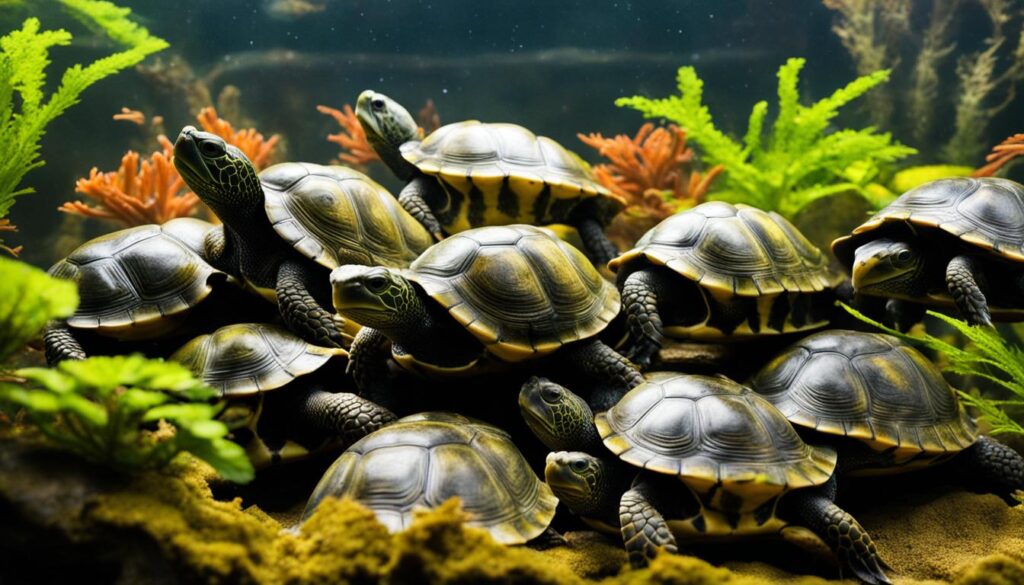
Control Measures for Algae in Turtle Tanks
To control algae growth and maintain a healthy tank environment, turtle owners should consider the following measures:
- Regular tank maintenance: Perform regular water changes to reduce nutrient levels and prevent the buildup of organic matter. Cleaning the tank walls and substrate also helps remove existing algae.
- Proper filtration: Invest in a high-quality filter designed for turtle tanks. A good filter will effectively remove waste and excess nutrients, preventing algae growth.
- Optimal lighting: Avoid excessive exposure to sunlight, as it can promote algae growth. Ensure proper lighting conditions for your turtle without overstimulating algae growth.
- Monitoring nutrient levels: Test the water regularly to monitor nutrient levels, especially nitrate and phosphate. If levels are consistently high, consider implementing additional measures, such as using chemical absorbers or adding live plants that can compete with algae for nutrients.
“Controlling algae growth in turtle tanks is crucial for maintaining the overall health of the tank. By implementing regular maintenance practices, proper filtration, and monitoring nutrient levels, turtle owners can ensure a clean and algae-free environment for their pets.”
Impact on Tank Health
Algae growth not only affects the aesthetics of the tank but can also have negative impacts on the overall health of the turtle. Excessive algae can reduce oxygen levels in the water, potentially stressing or suffocating the turtle. Additionally, certain types of algae can release toxins that are harmful to turtles. By controlling algae growth, turtle owners can create a healthier and more vibrant tank environment for their pets.
Proper Filtration
Proper filtration is crucial for maintaining a clean-smelling turtle tank. Turtles produce more waste than fish, so a filter specifically designed for turtle tanks is essential. A good filter will effectively remove debris, excess food particles, and the buildup of ammonia, which can cause a foul smell in the tank. Regularly cleaning and maintaining the filter is important to ensure optimal performance and prevent any clogging or malfunction.
When choosing a filter for your turtle tank, consider factors such as tank size, water volume, and the number of turtles. It’s recommended to invest in a filter with a higher flow rate to handle the increased waste production. Additionally, look for filters that offer mechanical, chemical, and biological filtration to effectively remove impurities and maintain water quality.
Remember to follow the manufacturer’s instructions for filter setup and maintenance. Clean or replace filter media regularly, as it can become clogged with debris and lose its effectiveness. Performing regular water tests to monitor ammonia levels is also crucial. If ammonia levels are high, it may indicate an issue with filtration or overstocking of turtles, and appropriate measures should be taken to rectify the situation.
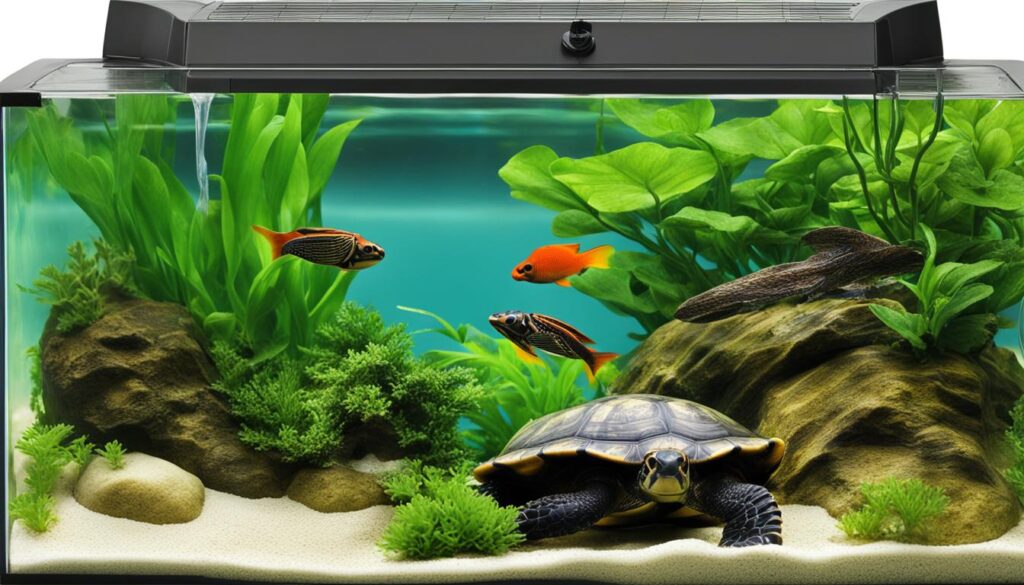
Table: Comparison of Turtle Tank Filter Types
| Filter Type | Advantages | Disadvantages |
|---|---|---|
| Canister Filter |
|
|
| Internal Filter |
|
|
| Hang-On-Back Filter |
|
|
Table: Comparison of Turtle Tank Filter Types. This table provides an overview of the advantages and disadvantages of different filter types commonly used in turtle tanks. Choose the filter type that best suits your tank setup and filtration needs.
Tank Size and Good Tank Maintenance
One of the key factors in maintaining a clean and odor-free turtle tank is ensuring that it is appropriately sized for your turtle. As turtles grow, they produce more waste, and a small tank can quickly become overwhelmed, leading to unpleasant odors. Providing an adequately sized tank will allow your turtle to swim, exercise, and eliminate waste without overcrowding the environment.
Along with tank size, proper tank maintenance is crucial in keeping your turtle’s habitat clean and fresh. Regular water changes are essential to remove accumulated waste and maintain water quality. Aim to perform partial water changes every 1-2 weeks, removing a portion of the water and replacing it with fresh, dechlorinated water. This helps to minimize the buildup of ammonia and other chemicals that can contribute to odor.
In addition to water changes, it’s important to clean the tank, substrate, and decorations regularly. Use a safe cleaning agent and hot water to scrub away any algae, bacteria, or debris that may be present. Be sure to remove any uneaten food, feces, or other waste from the tank, as these can quickly lead to odor problems. By following these maintenance practices, you can create a clean and inviting environment for your turtle.
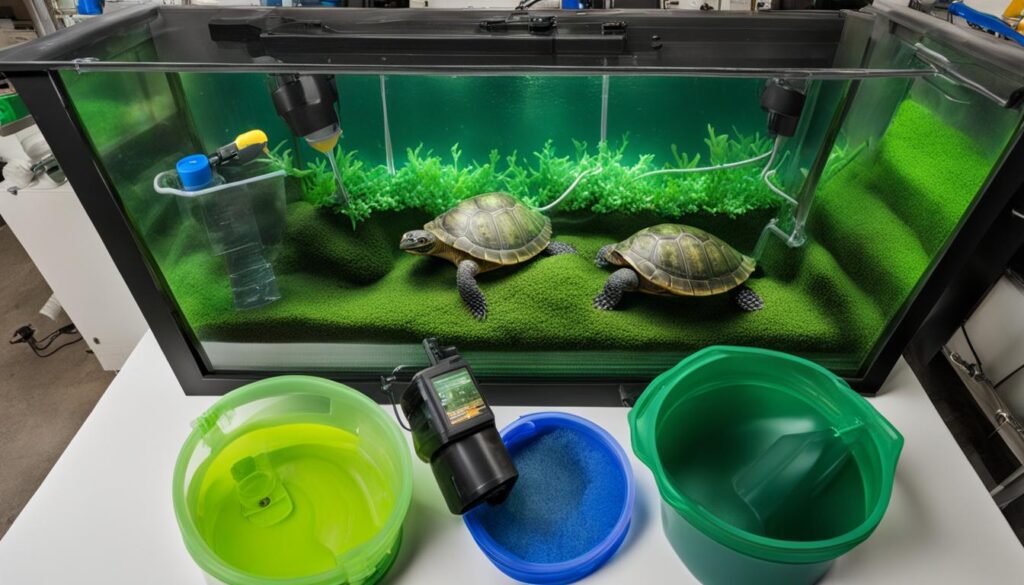
Table: Recommended Tank Sizes for Common Turtle Species
| Turtle Species | Minimum Tank Size |
|---|---|
| Red-eared Slider | 55 gallons for a hatchling, 120 gallons for an adult |
| Painted Turtle | 30 gallons for a hatchling, 75 gallons for an adult |
| Musk Turtle | 20 gallons for a hatchling, 40 gallons for an adult |
| Map Turtle | 30 gallons for a hatchling, 75 gallons for an adult |
By following these guidelines for tank size and maintenance, you can ensure that your turtle’s habitat remains clean and odor-free. Remember to regularly monitor water quality, perform necessary water changes, and clean the tank and decorations. With proper care and maintenance, you can provide a healthy and enjoyable environment for your turtle to thrive in.
Shedding Skin and Hygiene
Turtles shed their skin periodically, and these sheddings can contribute to a bad smell in the tank. Remove any shed skin from the tank regularly to prevent odor buildup. Additionally, proper hygiene in your turtle’s habitat is crucial for maintaining a clean and fresh-smelling environment.
Regularly cleaning and disinfecting any decorations or hiding spots in the tank will help reduce bacteria growth and foul odors. Use a non-toxic cleaning agent specifically designed for reptile habitats. Avoid using any harsh chemicals that could harm your turtle or disrupt the tank’s ecosystem. Remember to rinse thoroughly with clean water after cleaning to remove any residue.
Maintaining Good Water Quality
A clean and odor-free turtle tank starts with maintaining good water quality. Regularly test the water parameters, such as pH, ammonia, nitrate, and nitrite levels. High ammonia levels can contribute to a foul smell in the tank. If the water quality is poor, perform partial water changes and consider using a water conditioner to detoxify the water and remove any harmful substances.
Proper filtration is essential for maintaining good water quality. Invest in a high-quality filter designed for turtle tanks, as turtles produce more waste than fish. Clean and maintain the filter regularly to ensure optimal performance. It is also recommended to use activated carbon or other filter media specifically for odor control to keep the tank smelling fresh.
Preventing Algae Growth
Algae growth can not only make your turtle tank look unsightly but also contribute to unpleasant odors. To prevent excessive algae growth, avoid overfeeding your turtle, as excess food can promote algae growth. Additionally, maintain a consistent light cycle and avoid direct sunlight on the tank, as this can also encourage algae growth.
Regularly clean the tank walls and any decorations to remove algae. Use an algae scraper or magnetic sponge specifically designed for aquarium use. Be cautious not to scratch the tank walls or damage any decorations while cleaning. Maintaining a balance in the tank’s ecosystem with proper filtration, lighting, and water quality will also help control algae growth.
Turtle Tank Hygiene Tips
- Regularly remove any uneaten food, feces, or debris from the tank to prevent odor buildup.
- Perform partial water changes every 1-2 weeks, replacing a portion of the water with fresh, dechlorinated water.
- Provide your turtle with a designated area outside the tank for basking to minimize waste in the water.
- When handling your turtle or performing tank maintenance, always wash your hands thoroughly to prevent the spread of bacteria.
Summary
Maintaining proper hygiene in your turtle’s habitat is essential for preventing unpleasant odors in the tank. Regularly removing shed skin and cleaning decorations will help minimize bacteria growth. Additionally, maintaining good water quality with proper filtration and preventing algae growth will contribute to a clean and fresh-smelling turtle tank. Remember to follow proper tank maintenance practices and ensure the overall well-being of your turtle.
Turtle Tank Cleaning and Maintenance Tips
Regular cleaning and maintenance are essential for keeping your turtle tank clean, fresh, and odor-free. By following these simple steps, you can ensure a healthy habitat for your pet while minimizing unpleasant smells.
Proper Cleaning Routine
Establishing a regular cleaning routine is crucial for maintaining a clean turtle tank. Perform partial water changes every 1-2 weeks by removing a portion of the water and replacing it with fresh, dechlorinated water. This helps remove any accumulated waste and refreshes the tank environment. Use a siphon or a turkey baster to vacuum the substrate, removing any uneaten food, feces, or debris from the bottom of the tank.
It’s important to clean not only the tank itself but also the decorations and equipment. Use a safe cleaning agent specifically designed for aquarium use to clean the tank walls, filter, and other equipment. Rinse everything thoroughly with hot water to remove any residue.
Proper Equipment Maintenance
Maintaining and cleaning your turtle tank’s equipment is essential for optimal functionality and a clean-smelling tank. Regularly check and clean the filter to remove any debris or buildup that can lead to foul odors. Consult the manufacturer’s instructions for guidance on how often to clean and replace filter media.
In addition to the filter, regularly inspect and clean other equipment such as heaters, air stones, and lighting fixtures. This helps prevent any potential sources of odor and promotes a healthy tank environment for your turtles.
Preventing Odor Buildup
Preventing odor buildup in your turtle tank starts with proper waste management. Remove any uneaten food, feces, or shed skin from the tank as soon as you notice them. This reduces the decomposition of organic matter, which can cause unpleasant smells.
Regular observation and maintenance also play a crucial role in preventing odor buildup. Keep an eye out for any changes in water quality, such as cloudiness or strong odors, indicating potential problems. Address any issues promptly to maintain a clean and healthy turtle tank.
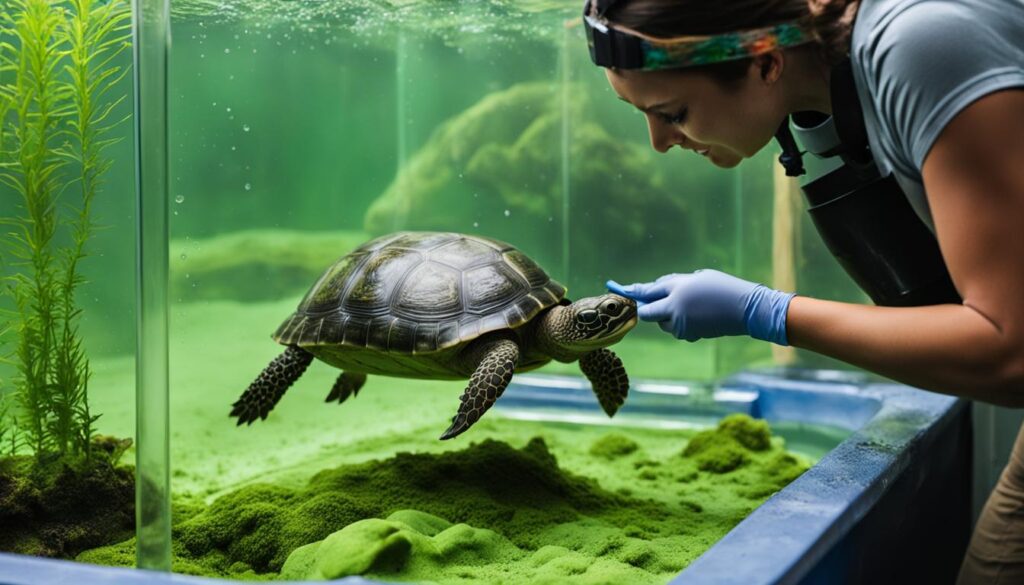
| Quick Tips for Turtle Tank Cleaning and Maintenance: |
|---|
|
Turtle Tank Odor Eliminator: Choosing the Right Equipment
When it comes to maintaining a clean and odor-free turtle tank, choosing the right equipment is essential. By investing in high-quality products specifically designed for turtle tanks, you can effectively eliminate turtle tank odors and create a fresh and pleasant environment for your pet.
A key piece of equipment that can help combat lingering odors is a powerful filter. Turtles produce more waste than fish, so a filter designed for fish tanks may not be sufficient. Look for a filter that is specifically designed for turtle tanks, with strong filtration capabilities to remove debris, excess food particles, and the buildup of ammonia, which can cause a foul smell.
In addition to a reliable filter, you may also consider using a tank deodorizer or odor eliminator that is formulated specifically for turtle tanks. These products can help neutralize any remaining odors and leave your tank smelling fresh. Be sure to follow the manufacturer’s instructions when using these products to ensure their effectiveness.
Comparing Turtle Tank Odor Eliminators
| Product | Description | Key Features |
|---|---|---|
| Product A | An all-natural solution that effectively eliminates odors in turtle tanks. | – Made from natural ingredients – Non-toxic and safe for turtles – Easy to use: simply add to the tank water |
| Product B | A powerful deodorizer that removes odors and neutralizes bacteria in turtle tanks. | – Eliminates strong odors – Helps maintain water clarity – Long-lasting formula |
| Product C | A specialized odor eliminator that targets bacteria and organic waste in turtle tanks. | – Breaks down organic waste – Reduces ammonia levels – Promotes a clean and healthy tank environment |
When selecting a turtle tank odor eliminator, consider factors such as the size of your tank, the severity of the odor problem, and your personal preferences. Reading reviews and seeking recommendations from other turtle owners can also help guide your decision.
In conclusion, choosing the right equipment, including a high-quality filter and a reliable tank deodorizer, is crucial for eliminating turtle tank odors. By investing in these products, you can create a clean and odor-free environment that both you and your turtle will enjoy.
Proper Handling and Safety Precautions
Ensuring the health and well-being of your turtle goes beyond maintaining a clean tank. Proper handling and safety precautions are essential to protect both you and your pet. Turtles can carry salmonella, a bacteria that can cause illness in humans. Therefore, it’s important to take necessary measures to prevent any potential risks.
When handling your turtle or performing tank maintenance, always remember to wash your hands thoroughly afterward. Use warm water and soap, scrubbing your hands for at least 20 seconds. This simple practice can help reduce the chances of contracting any potential bacteria. By practicing good hygiene, you can keep yourself and your turtle safe.
Turtle waste management is another crucial aspect of maintaining a healthy turtle tank. Regularly remove any feces or uneaten food from the tank to prevent odor buildup and bacterial growth. Implementing a waste management routine will contribute to a cleaner and safer environment for your pet.
It’s also important to be cautious while working with cleaning agents or chemicals. Ensure that any substances you use are safe for your turtle and follow the instructions carefully. Avoid using harsh chemicals that can harm your turtle or disrupt the tank’s delicate ecosystem. Always prioritize the safety and well-being of your pet.
| Turtle Handling and Safety Precautions | Turtle Waste Management |
|---|---|
| Wash hands thoroughly after handling turtles or performing tank maintenance. | Regularly remove feces and uneaten food from the tank. |
| Use warm water and soap, scrubbing for at least 20 seconds. | Implement a waste management routine to prevent odor and bacterial growth. |
| Be cautious when working with cleaning agents or chemicals. | Prioritize the safety and well-being of your pet. |
By following proper handling and safety precautions, along with effective waste management practices, you can create a safe and healthy environment for your turtle. It’s essential to promote the well-being of your pet and minimize any potential risks. Take the necessary steps to ensure a positive and enjoyable experience with your beloved turtle companion.
Conclusion
By implementing proper turtle tank hygiene and maintenance practices, you can ensure a clean and healthy habitat for your pet. Regular cleaning and maintenance, along with proper filtration, are essential in preventing and minimizing odors in your turtle tank. Remember to perform regular water changes and remove any uneaten food or waste to keep the tank environment fresh.
Controlling algae growth is another crucial aspect of turtle tank maintenance. Regularly clean the tank walls and maintain good water quality to prevent a cloudy turtle tank and unpleasant odors. Additionally, proper handling and safety precautions, such as washing your hands after handling your turtle, are important for both your safety and the well-being of your pet.
Lastly, providing a spacious tank size for your turtle allows for proper movement and waste distribution, reducing the likelihood of a smelly tank. By following these guidelines and prioritizing turtle habitat maintenance, you can enjoy a clean and odor-free environment for your beloved pet.
FAQ
What causes turtle tank odor?
Turtle tank odor can be caused by food particles, algae growth, turtle waste, poor filtration, and a small tank size.
How can I reduce food particles in the tank?
Feed your turtle in a separate container filled with water to prevent food particles from mixing with the tank water. Avoid overfeeding your turtle to minimize leftover food that can cause the tank to smell.
How do I control algae growth in the tank?
Ensure that your tank is not overcrowded with turtles as this can promote algae growth. Regularly clean the tank and use an algae cleaner or magnetic sponge to remove algae from the tank walls. Maintain good water quality and perform regular water changes.
What kind of filter should I use for a turtle tank?
Invest in a powerful water filter specifically designed for turtle tanks. Turtles produce more waste than fish, so a filter designed for fish tanks may not be sufficient. Regularly clean and maintain the filter to ensure optimal performance.
How do I maintain good tank hygiene?
Provide an adequately sized tank for your turtle and follow proper tank maintenance practices, including regular water changes, cleaning the tank and substrate, and removing uneaten food and waste. Regularly clean and disinfect decorations or hiding spots to reduce bacteria growth and foul odors.
How can I prevent turtle tank odor from shedding skin?
Regularly remove any shed skin from the tank to prevent odor buildup. Ensure proper hygiene in your turtle’s habitat by regularly cleaning and disinfecting any decorations or hiding spots.
How often should I clean the turtle tank?
Perform partial water changes every 1-2 weeks, remove any uneaten food, feces, or debris from the tank regularly. Clean the tank, substrate, and decorations properly using a safe cleaning agent and hot water.
What equipment should I use for a turtle tank?
Invest in a high-quality filter designed for turtle tanks to ensure efficient waste removal. Consider using a tank deodorizer or odor eliminator specifically formulated for turtle tanks. Choose appropriate lighting and heating to create optimal conditions for your turtle and prevent any potential odor-causing issues.
How do I handle my turtle tank safely?
Turtles can carry salmonella, so always wash your hands thoroughly after handling them or performing tank maintenance. Implement proper waste management practices to prevent odor and maintain a healthy environment.






